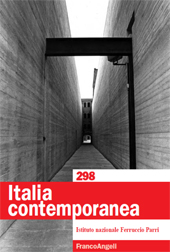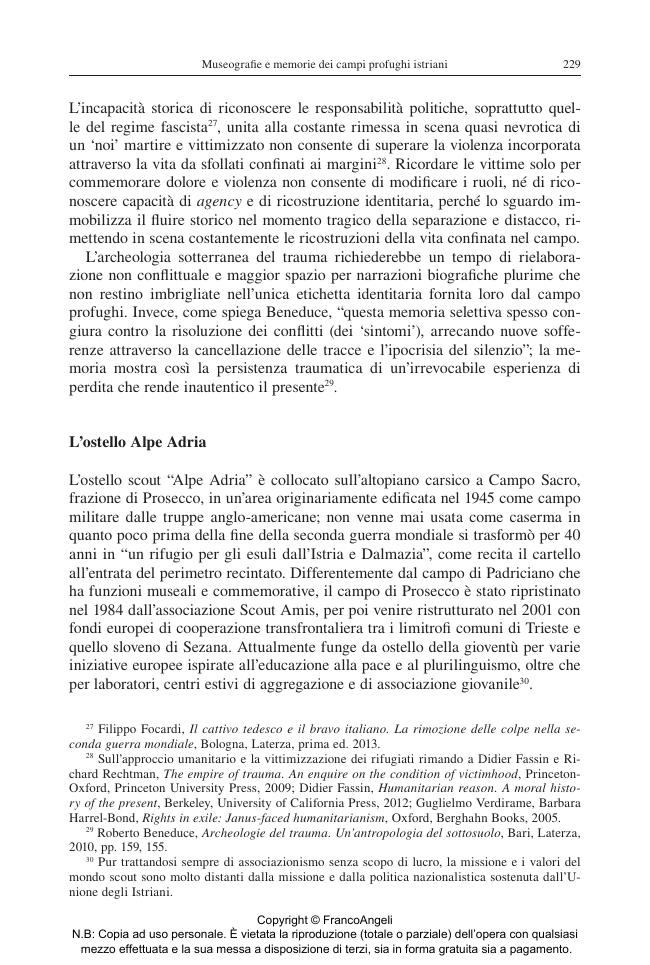Museografie e memorie dei campi profughi istriani
P. 220-237
A partire da un'analisi comparativa di alcune pratiche museografiche riguardanti l'esodo istriano del secondo dopoguerra, l'articolo analizza il processo di heritage e di costruzione identitaria degli esuli istriani. Dalla rifunzionalizzazione degli ex campi profughi in area transfrontaliera si può osservare un esempio di museografia spontanea centrata sul trauma dell'abbandono dell'Istria e della comunità perduta, che congela l'identità dei profughi come vittime al momento dell'esodo. Un altro esempio di heritage contempla stanze della memoria con foto e biografie plurime non conformi a un'unica narrazione, parallelamente al riutilizzo dell'ex campo profughi per nuove forme di ospitalità; in questo modo l'esperienza degli ex rifugiati viene ricollocata nel fluire della storia, alimentando identità relazionali non contrastive, che stemperano il conflitto dicotomico con l'alterità di confine. [Testo dell'editore]
This article analyzes the process of heritage and identity construction of Istrian exiles, starting from the analysis of some museological practices concerning the Istrian exodus after the Second World War. The refunctionalization of a former refugee camp in a border area is an example of a spontaneous museography focused on the trauma of abandoning Istria and the lost community, which freezes refugees' identity as victims of the exodus. Another example of heritage is the "rooms of memory" displaying photographs and biographies that does not conform to a single narrative, in parallel with the reuse of former refugee camps for new forms of hospitality; in this way, the experience of former refugees is relocated in the flow of history, fueling relational identities without the dichotomous conflict with the otherness in border areas. [Publisher's text]
Is part of
Italia contemporanea : 298, 1, 2022-
Articles from the same issue (available individually)
-
Information
ISSN: 2036-4555
KEYWORDS
- Esodo istriano, Memoria, Museografia, Campi profughi, Confine
- Istrian exodus, Memory, Museography, Refugee camps, Border, Heritage



